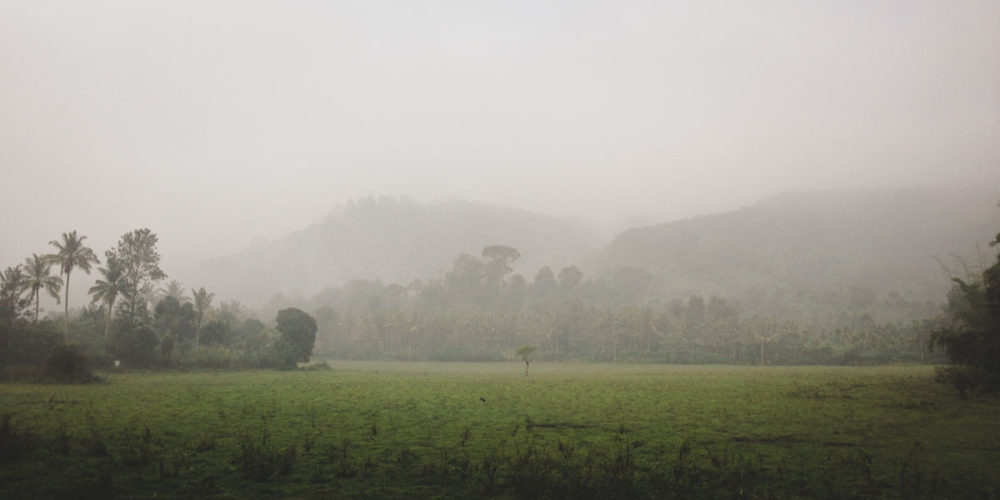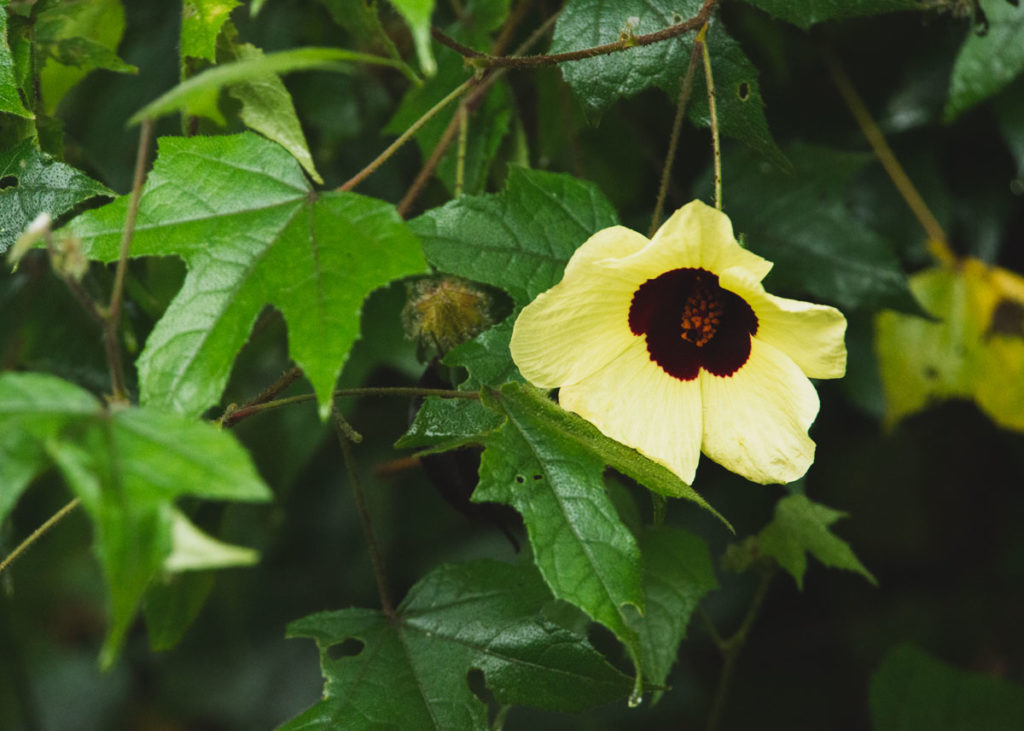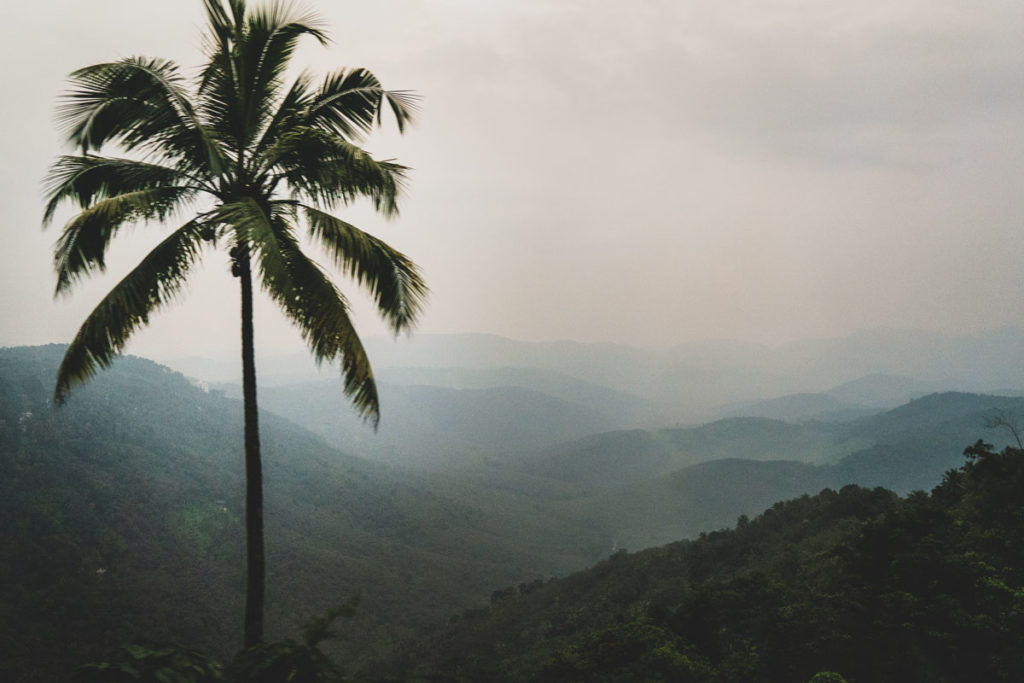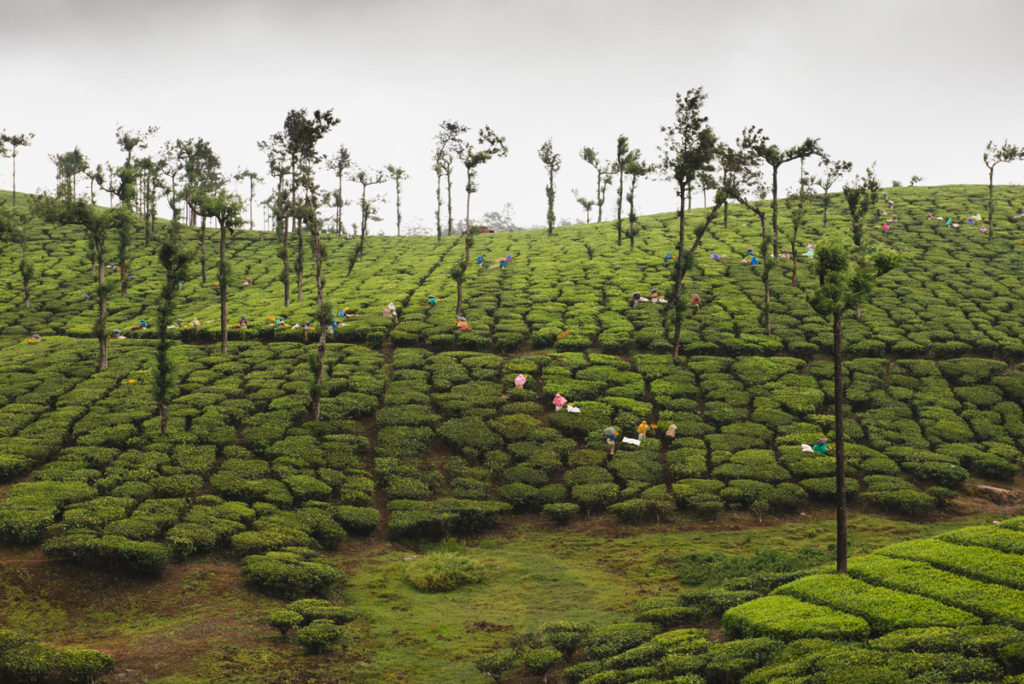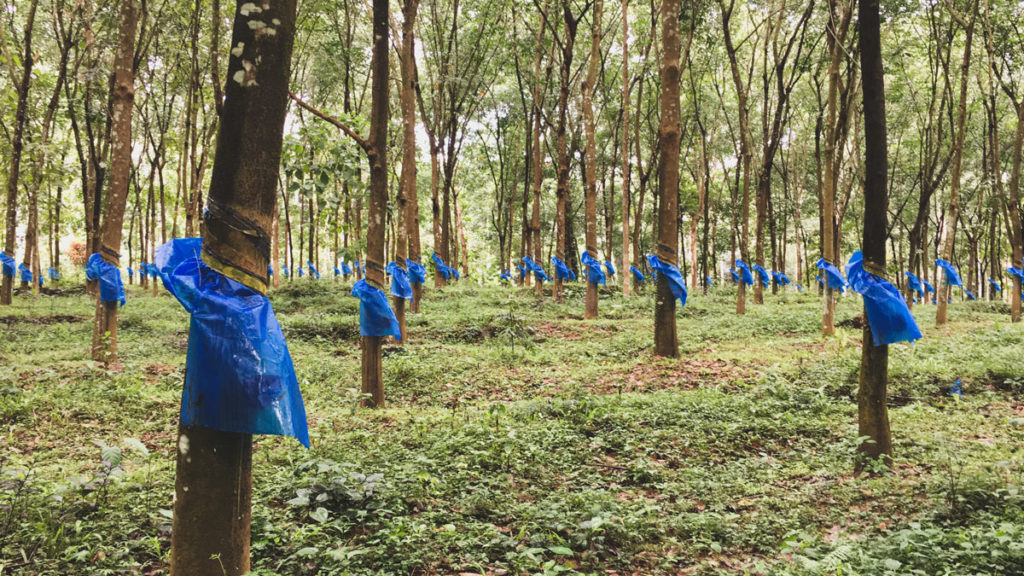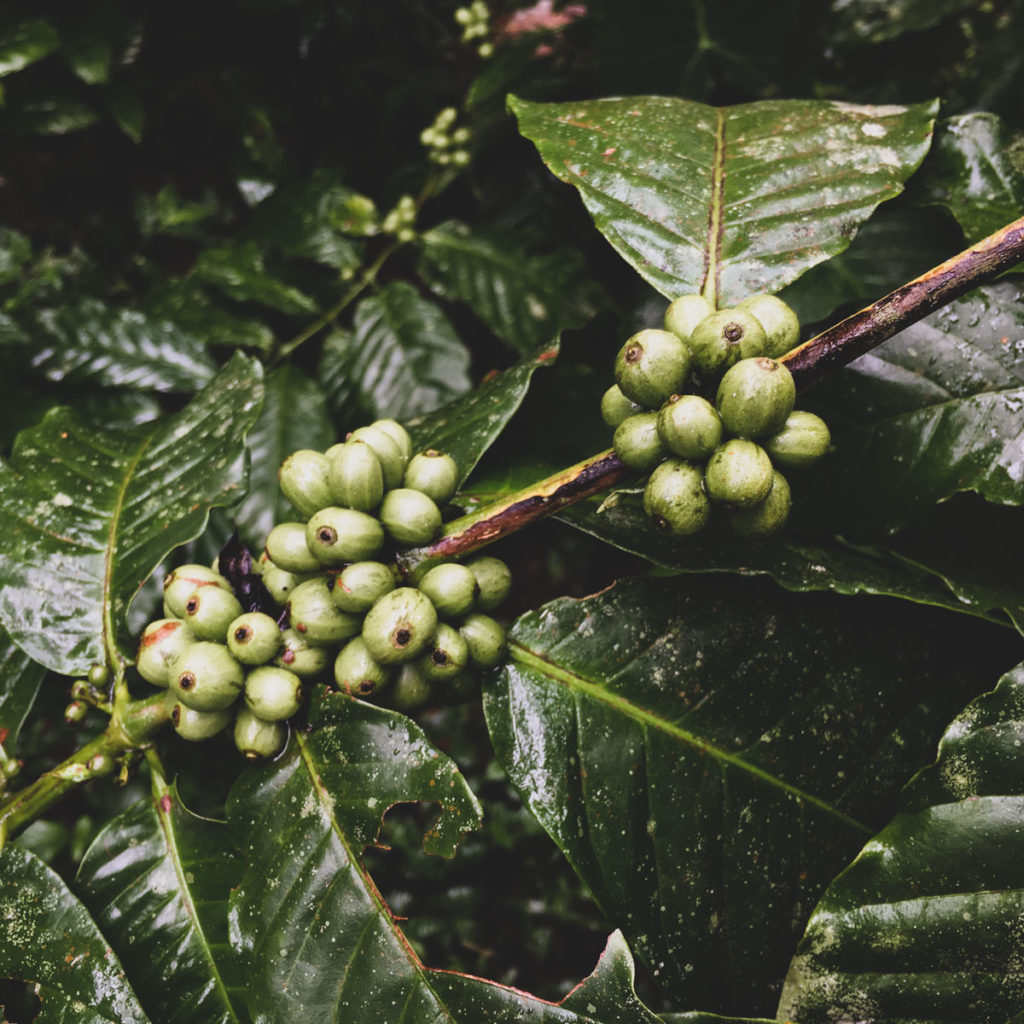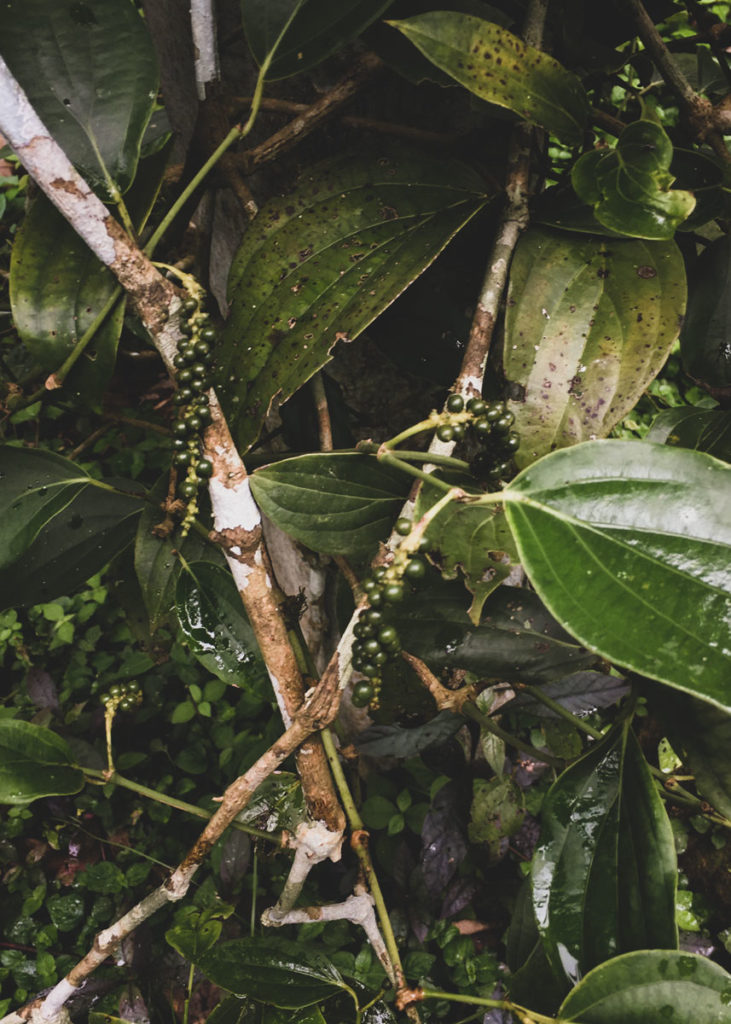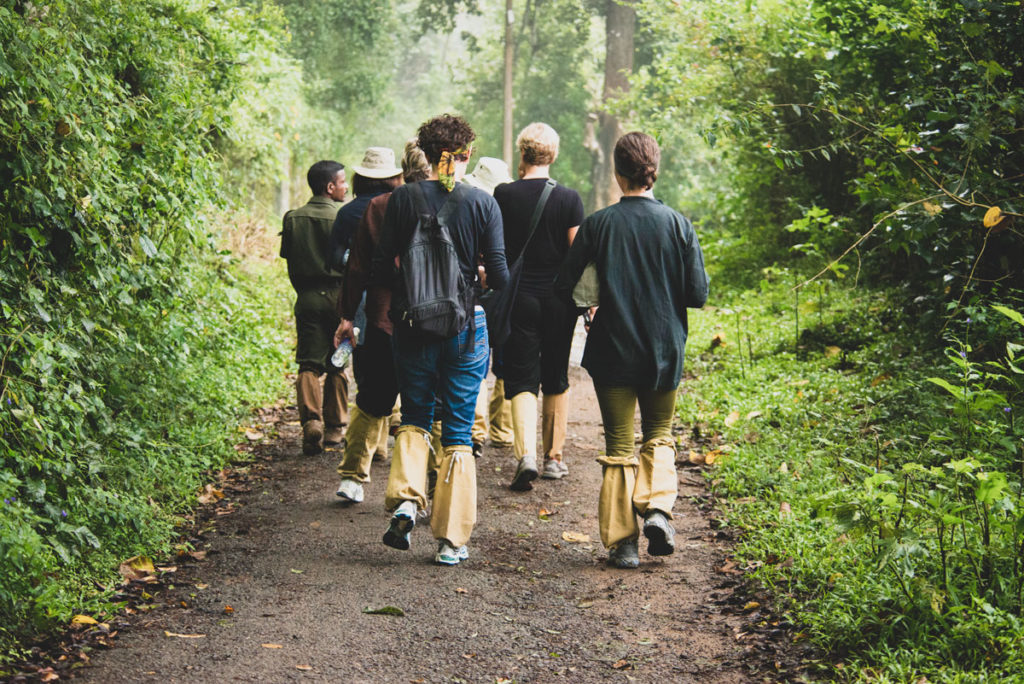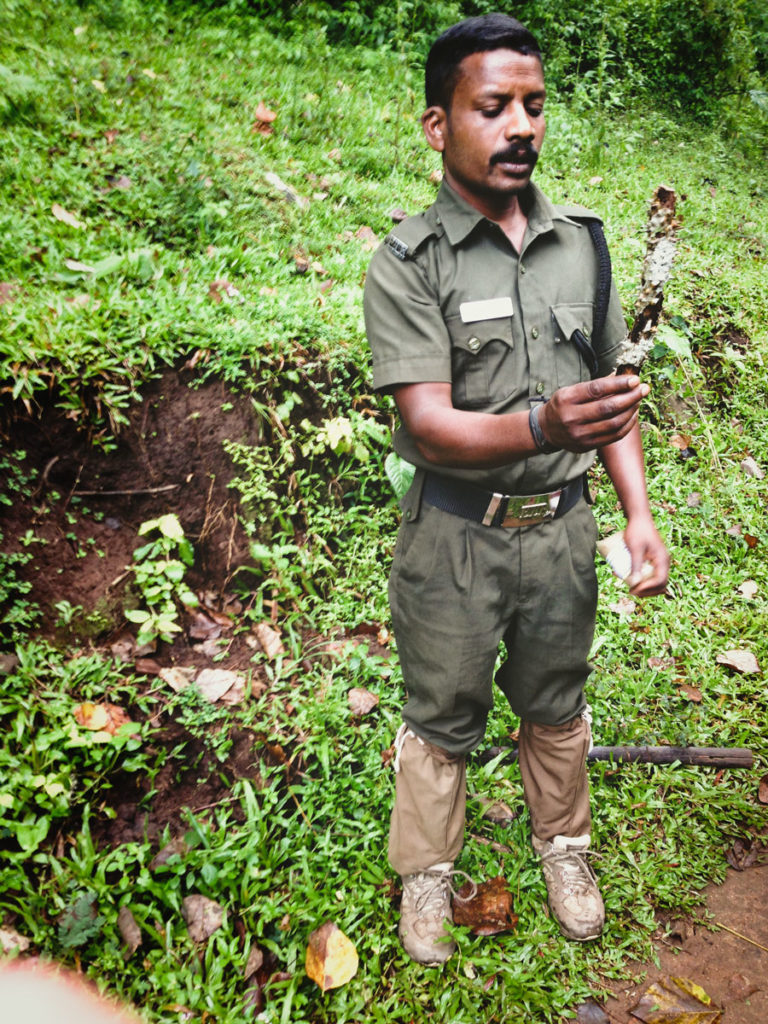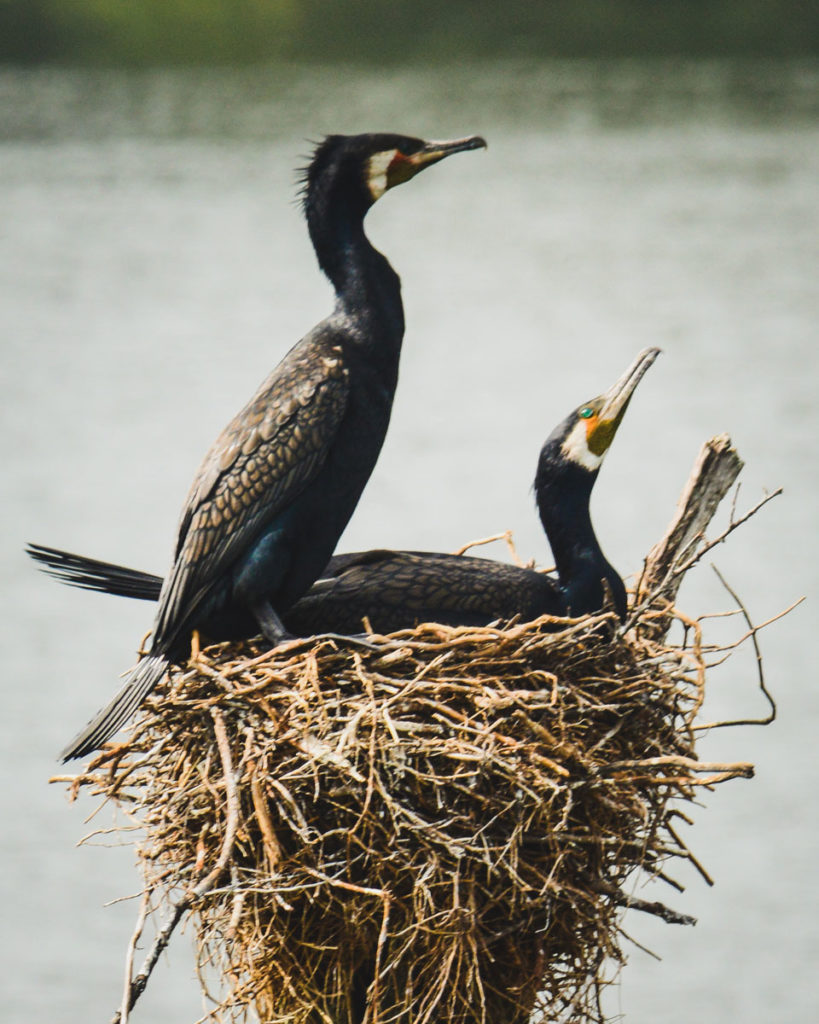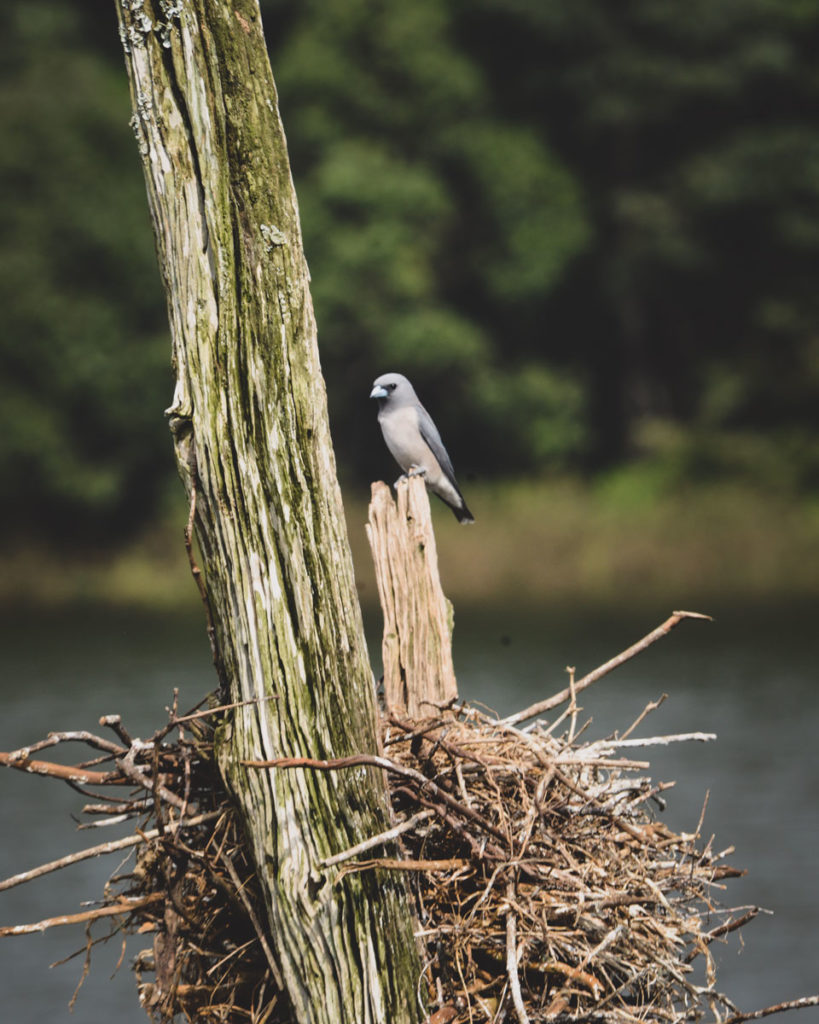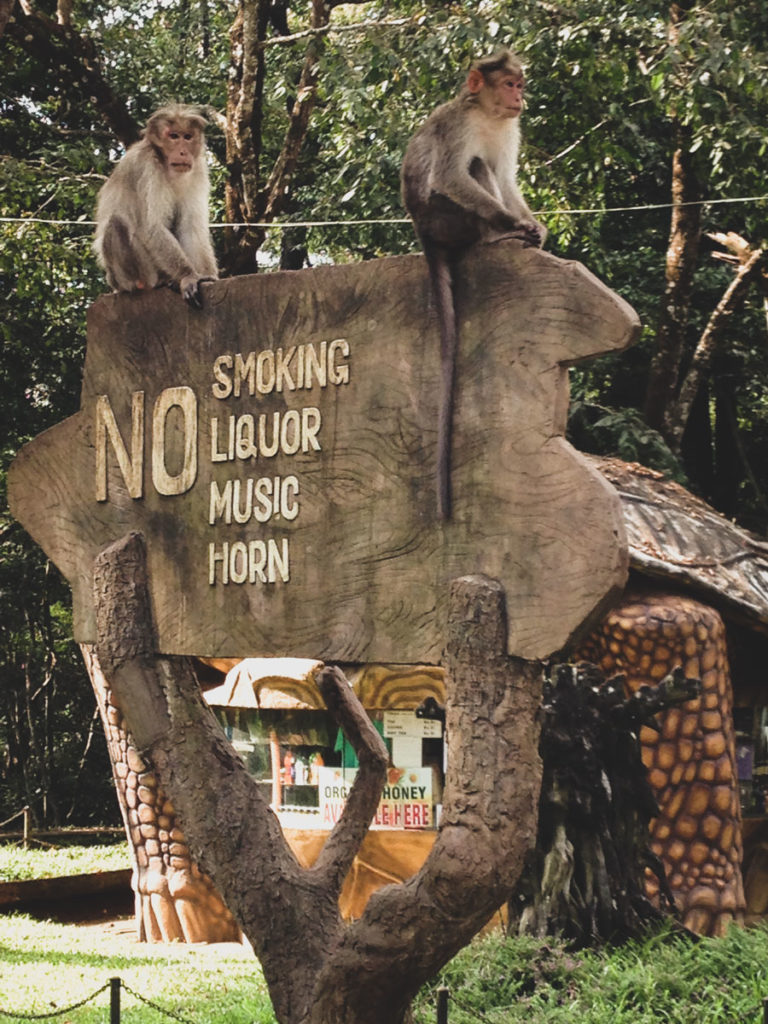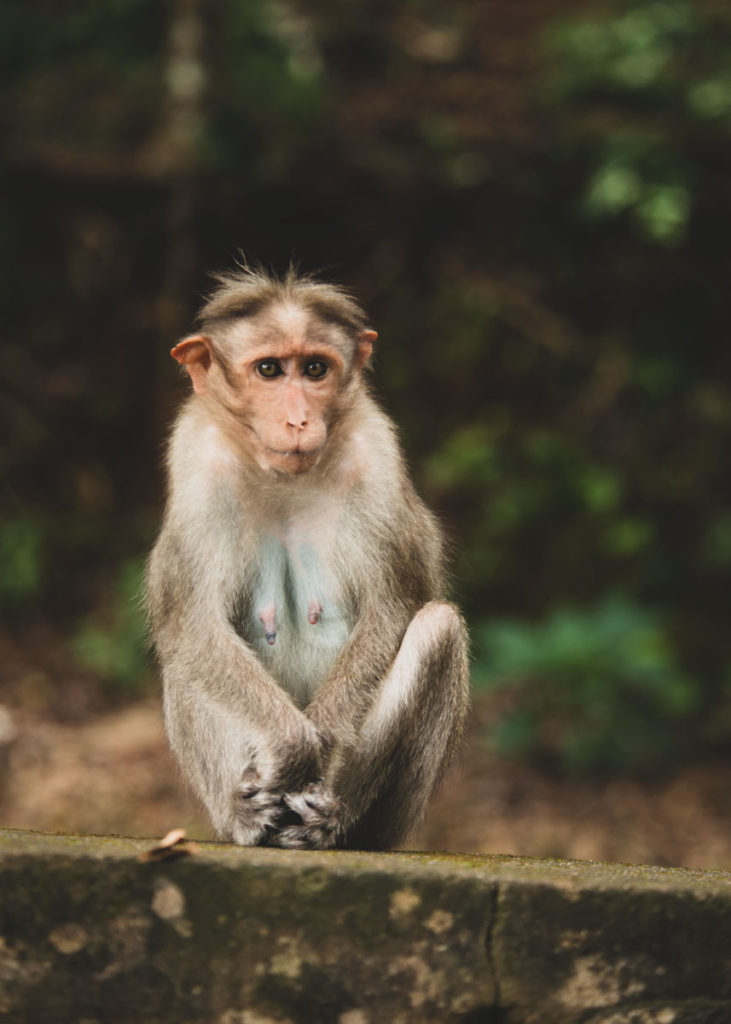South India is lush. Things want to grow and grow and grow. Nowhere is this more true than in the area around Periyar National Park.
On the drive up to these highlands from coastal Kerala, you’ll see white Angel’s Trumpets heralding your journey. Blue morning glory creeps along the roadside. Clusters of red, orange and yellow Jungle Flame (Ixora coccinea) flare up like sparks at irregular intervals. Hibiscus, oleander and frangipani and bougainvillea peak over garden fences and prove how tropical a zone you are entering.
The hills are verdant.
Plantations of rubber trees tower over the roads creating a sense of a living breathing tunnel. The green leaves of coffee trees shine with the wet of frequent rains and bow under the weight of their bright red cherries growing in clusters along each limb.
Still further up, pickers dressed in a rainbow of colours pluck leaves from the chest high tea trees on the steep slopes of plantations. Finally, the fronds of cardamom plants wave like animated potted palms as one gets close to towns like Kumily, Idukki and Thekkady near the national park.
Of all the things that grow in Kerala, the spices that grow in these Cardamom Hills are some of the worlds most sought-after goods. European explorers, in the Age of Discovery, came to coastal Kerala to trade for them starting in the 15th century. The Chinese were here even earlier.
But, here in this hilly jungle covered terrain, beyond the plantations and agriculture, there is also a vast nature preserve. It’s a place where spices still grow wild. This is the area that was Rudyard Kipling’s inspiration for Jungle Book and after spending a little time here, it’s easy to see why.
Periyar National Park
Periyar National Park and Wildlife Sanctuary covers 925 square kilometers (357 square miles) high in the Cardamom Hills of the Western Ghats mountain range. Established in 1982, Bengal tigers and elephants still roam freely.
Guar (Indian bison), Sambar deer, wild boars, sloth bears, Nilgiri tahr (ibix), Lion tail Macaque and Nilgiri langur monkeys and 226 species of birds call the area home. Flora includes forests of teak, rosewood, sandalwood, jacaranda, mango, tamarind, banyans and bamboo.
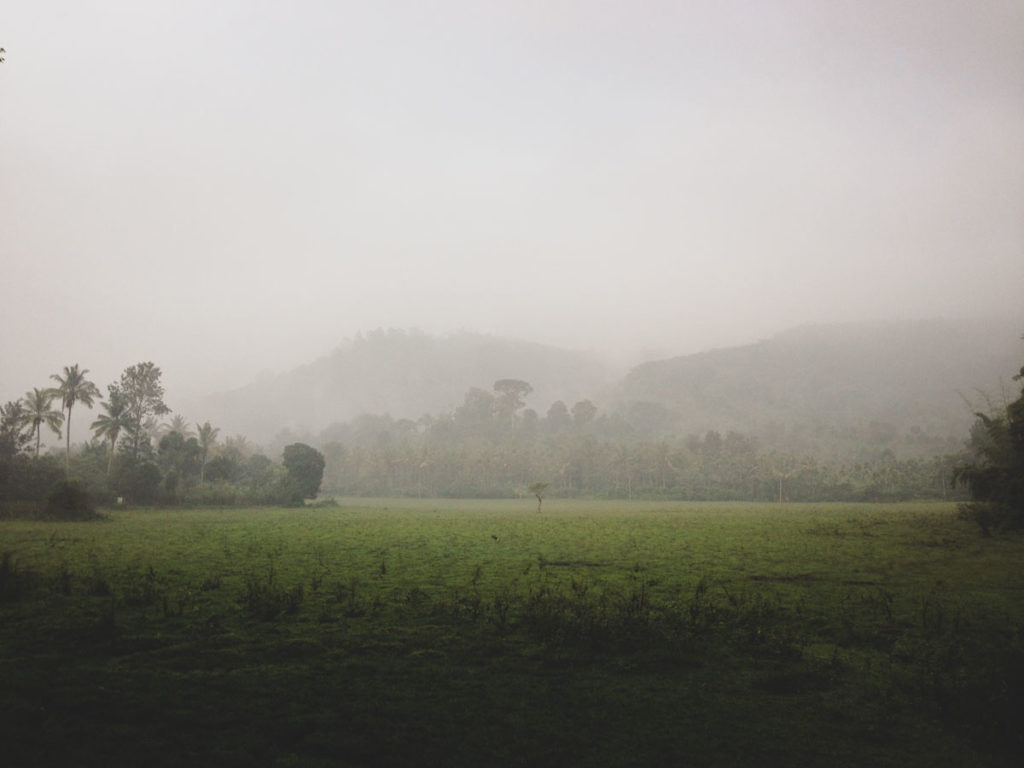
You can trek with tribal guides who know every bit of flora and fauna like the back of their hands. The park also features boat cruises on a lake created by the Idukki hydro-electric dam in 1895.
Jungle Trekking
I’ve done a half-day jungle trek twice now with the Periyar National Park warden guides. What I learned is, it’s not for everyone.
The first time I dared this adventure, it was in December of 2012. The monsoons were long over and the humidity was low. The tribal guide leading my group was knowledgeable, spoke excellent English and had an astounding knowledge of the flora and fauna. He could spot birds in high branches that were invisible to the rest of us.
Kumily’s Tribal People
There are about 2000 indigenous people in the Kumily area with five ethnically different communities — the Mannans, the Paliyas, the Uralis, the Mala-arayas and the Malampandarams. They live mainly on the outskirts of the Periyar Tiger Reserve and, reportedly, in perfect harmony with nature. Our guide explained, “We see everything in the jungle as if it was a part of ourselves. There is no separation and we know the names of every living thing because of this.”
No longer able to live on their traditional occupations like fishing and agriculture alone, with the advent of eco-tourism, they have found jobs in tourism-related programmes and serve as guides for tourists or as forest guards to prevent poaching and other illegal activities. You meet up with them at the National Park trekker’s kiosk just outside the park to don special protective canvas stockings cum gators.
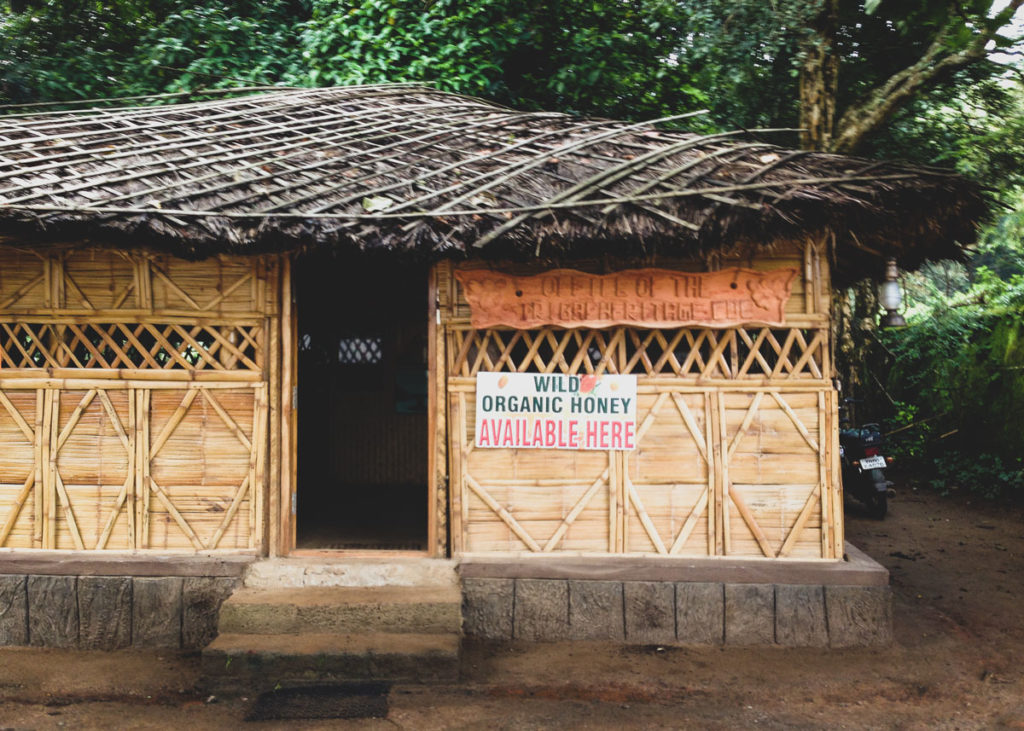
Into the Jungle
We spent about three to four hours trekking. I had expected we’d need a machete to cut a swath through the undergrowth – in the matter of an Indiana Jones – but the pathways were well maintained and only over grown in a few spots. I didn’t expect to fall in love with it or to find it so astoundingly beautiful but I did. I remember moments that still take my breath away.
Rounding a corner to find a meadow of white ginger in bloom, the scent delivered on a soft breeze. Walking over a waterfall on a narrow bridge and feeling the falling water cooling the air. Spotting large yellow and purple orchids growing in their natural habitat in the nooks and crooks of trees. Tearing off a small piece of cinnamon bark to sniff its unmistakable fragrance in situ. These are but a few instances that stand out for me. It was relaxing and comfortable but exciting because I was exploring a whole new world as well.
When we were following a stream back to the village, we could hear drums and voices in the distance. I recalled the passages from The Jungle Book where little Mogli’s curiosity leads him to discover his own kind and leave his animal family behind. I felt like Kipling could have walked the same path we were taking – especially when I saw some local children playing in a shallow eddy.
Monsoon Jungle
The next time I trekked here, it was near the end of the late monsoon season, in October of 2014. Nightly deluges left the paths swollen and thick with mud. And, along with the wet and the mud came small brown leeches. Leeches like to crawl up or drop into any opening on a human target. (Is your skin crawling?)
The tribal guides always help guests don special canvas leg coverings/gators to prevent the leeches accessing bodies and they advise long sleeves and high collars for good reason. I still thought that day was as beautiful as the first time I had visited the jungle but some of my guests were not amused. You may duly note this and choose your season wisely for any plans to trek here.
Still, it was an exciting day as some of my friends saw a herd of elephants on their trek. This required a stealth retreat. Being face to face with a mother elephant in the wild is a knock on death’s door. The fear on their guide’s face had everyone’s adrenalin pumping. They claimed major bragging rights at dinner that evening.
My group, in contrast, saw a spot-bellied eagle-owl, a few guar and countless monkeys who kept us company in their oh-so curious ways. This is still one of my favourite things to do but if you are not so active, you might choose to enjoy the national park’s splendour on a boat cruise on the Periyar Lake reservoir instead.
Cruising Periyar
Here’s the pro tip: Take the earliest departure for your cruise. Animals are up with the sun and taking a siesta later in the day.
The number of animals you will see on a cruise in Periyar National Park’s lake is also dependent on the level of water in the lake. One year, my visit was too close to monsoon season and the grasslands were flooded. We saw some fantastic birdlife but no animals that year.
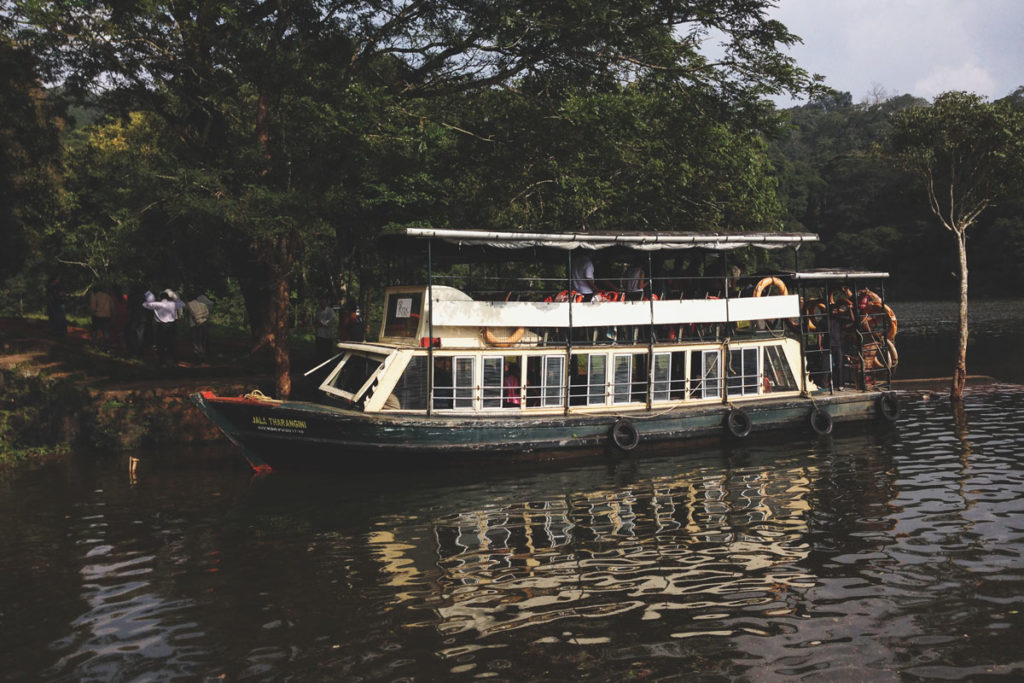
Another year, the waters were low and we saw the guar and ibix with ease. Next time, I’ll be aiming for that 7 a.m. departure. Here’s a few more tips to help you decide if you will enjoy this experience.
The boats are stable, BUT, everyone gets a bright orange life preserver and everyone must wear it properly. That means you are wearing a life preserver that has been worn by thousands of other sightseers.
You sit side-by-side in rows on white plastic garden chairs. You can get up and move around a little bit but not much as the space if fairly confined. Those would be the two drawbacks.
On the plus side, you are out on the water and they take you quite far. You are gone a few hours. You will see lots of bird life – guaranteed. You can bring a few snacks on board to munch on. Just watch that the monkeys near the boarding docks don’t steal your goodies. They are expert thieves.
The best part of a tour like this is you can talk with the other visitors and they are often Indian nationals who speak English very well. In my experience they’ve also been curious, kind and friendly. We’ve gotten on well and were fast friends by the time we returned to shore.
People do see elephant herds coming down to the lake to bathe. And, the scenery in general is breathtaking as you can see in Pauli-Ann’s photos.
My original motivation for travelling to the Periyar region was to visit the spice plantations but, finding and exploring Periyar National Park was a great bonus and a not to be missed part of any visit to the region.
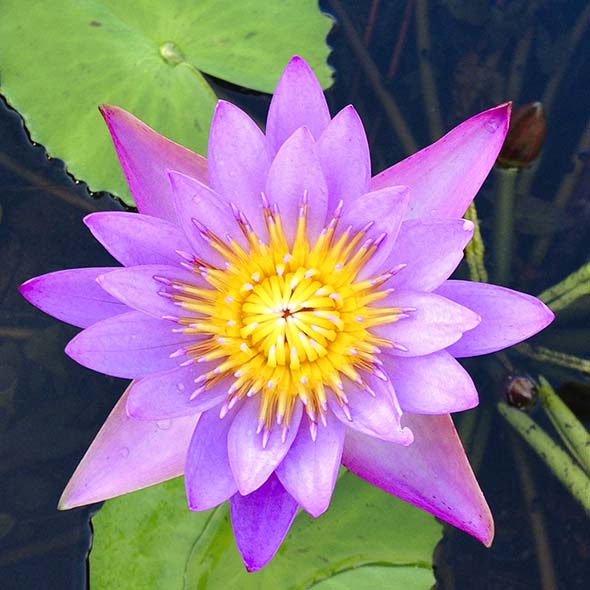
Gratitude
Thanks to the KTM Society and Travel XS for sponsoring our travel throughout South India in 2016.
All words and photos are our own and were not shared with the sponsors before publication.

